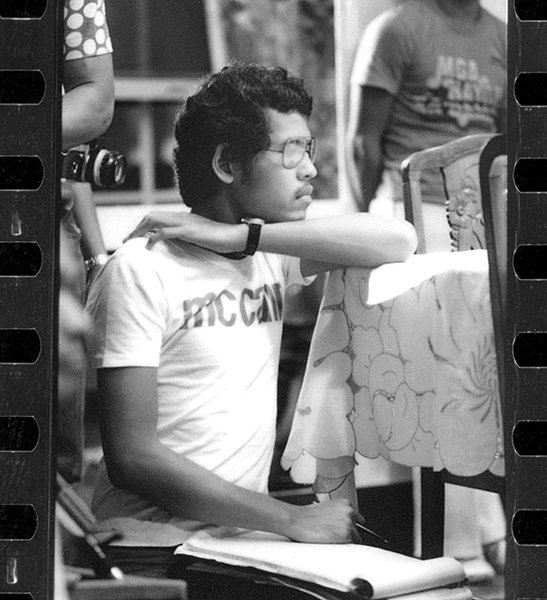VETERAN filmmaker Cesar Hernando, whose art direction graced classic movies such as “Batch ‘81” and “Sister Stella L,” passed away last May 8 at the age of 73. He has left behind a legacy of excellence in production design and art direction.
Hernando, who graduated from the old UST College of Architecture and Fine Arts in 1967, was the older brother of film critic and Varsitarian alumnus Mario Hernando, who had passed away in 2017. Cesar Hernando was also a professor of fine arts at the University of the Philippines.
Hernando collaborated with Mike de Leon, Raymond Red, and Lav Diaz, all internationally acclaimed Philippine filmmakers. He provided the telling physical and social geography that complemented the powerful narratives and characters of De Leon’s “Batch ’81,” “Kisapmata” and “Sister Stella L”; Red’s ‘Bayani” and “Anino”; and Diaz’s five-hour “Batang Westside.”
Red said Hernando was noted for his humility and kindness.
“I was just beginning to make short films, but he was already an established production designer in the industry and he already regarded me as a filmmaker,” Red told the Varsitarian.
“He’s highly talented and knowledgeable, especially when it comes to history and the linkages between design, theories and elements,” added Red, whose short film, “Anino” (2000), won the Palm d’Or (grand prize for short film) of the Cannes film festival.
Red and Hernando worked together for 35 years, the start of their collaborations traced back to their days at the Movie Workers Welfare Foundation, Inc. (Mowelfund) – a non-profit social welfare and educational development foundation established by former president Joseph Estrada.
“He immediately got inspired by the movement and joined us… eventually dabbling in short films and experimental films,” Red said. “During that time, the emerging independent alternative film movement was making waves, and most of the filmmakers were coming from the Mowelfund Institute or the UP Film Center.”
Red’s 1992 feature film debut, “Bayani,” which depicts in an oblique fashion the execution of Andres Bonifacio on orders of Emilio Aguinaldo, was designed by Hernando.
But Hernando’s most acclaimed collaboration was with Mike de Leon.
“Batch ’81” (1982), a film tackling the culture of violence among greek-letter campus fraternities, was one of their most notable projects together. The film was eventually received by viewers as an allegory of the fascism and totalitarianism inherent in the martial law dictatorship of Ferdinand Marcos.
“His enthusiasm is very clearly and indelibly seen in actual works of cinematic art,” De Leon said. “He created cinema art; he didn’t just talk about it.”
Hernando designed De Leon’s other acclaimed films and projects, most notable of them were “Kisapmata” (1981) and “Sister Stella L” (1984).
“I call him the ‘Filipino Man of Cinema.’ No one comes close to Cesar in his knowledge of cinema, both local and foreign.” De Leon said. “Cesar shared selflessly, and this was his manner of teaching, not through lectures. His enthusiasm is very clearly and indelibly seen in actual works of cinematic art. In other words, he created cinema art, not just talked about it.”
Hernando also worked as assistant director to National Artist for Cinema Ishmael Bernal in 1971 for the latter’s debut feature, “Pagdating sa Dulo.”
Hernando was a three-time recipient of the Gawad Urian award for best production design for “Kisapmata” (1981), “Bayani” (1993) and “Batang West Side” (2002).
“He was like a film encyclopedia in a way, if I need to know something or do a research, especially on film history, he is one of the first people that I call,” Red said.
Hernando’s directorial works were “Kagat ng Dilim” (2006), which featured actor Piolo Pascual, and the short film “Gayuma” (2015).
Red said Hernando’s best trait was his selflessness. “He was not selfish,” said Red. “He would really share everything he had—all his knowledge and talent—to ensure the project would be completed.”
Hernando also did the production design of Red’s “Himpapawid” (2009), Diaz’s “Kagadanan sa Banwaan ning Mga Engkanto” (2007), and Jose Avellana’s “Kung Mawawala Ka Pa” (1993).













